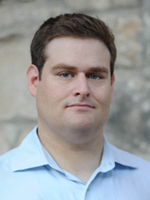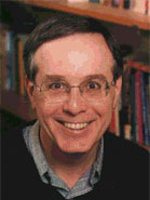Press Release: Carnegie Mellon Authors Reflect on Fact, Fancy and Johnny Miller's 63 at the 1973 U.S. Open
Contact: Shilo Rea / 412-268-6094 / shilo@cmu.edu

 PITTSBURGH—As the golf world turns to watch the drama unfold at the upcoming U.S. Open next week, there is another occasion to celebrate: it is the 40th anniversary of golfer-turned-commentator Johnny Miller's historic round of 63 to win the 1973 U.S. Open at Oakmont.
PITTSBURGH—As the golf world turns to watch the drama unfold at the upcoming U.S. Open next week, there is another occasion to celebrate: it is the 40th anniversary of golfer-turned-commentator Johnny Miller's historic round of 63 to win the 1973 U.S. Open at Oakmont.
Carnegie Mellon University Historian Steve Schlossman (right) and Alumnus Adam Lazarus (DC'06) offer their observations of what many experts still consider to be the greatest round of golf ever played in "Fact, Fancy and Johnny Miller's 63 in the 1973 U.S. Open at Oakmont." Schlossman and Lazarus constructed the retrospective from their hit 2010 book "Chasing Greatness: Johnny Miller, Arnold Palmer and the Miracle at Oakmont," which tells the story of how Miller upstaged the greats of golf's golden era — Arnold Palmer, Jack Nicklaus, Lee Trevino and others — to come from behind to win by a single stroke with a record-setting score.
"A number of myths persist about the 1973 U.S. Open — some generated by Miller himself — that need to be reexamined and, where possible, clarified," said Schlossman, professor of history who teaches the only collegiate-level course on the history of golf. "There are also several features of Miller's extraordinary athletic achievement that haven't been adequately appreciated."
To uncover what actually happened 40 years ago, Schlossman and Lazarus used a wealth of resources, including the Oakmont and United States Golf Association (USGA) Museum archives; thousands of newspaper articles from the 1920s through the 2000s; newly discovered television coverage; and 62 separate interviews with players, caddies, USGA officials and Oakmont staff members.
With their new "Fact, Fancy and Johnny Miller's 63 in the 1973 U.S. Open at Oakmont" document — which is available for free online — Schlossman and Lazarus hope to commemorate the anniversary of Miller's historic round as well as set a few facts straight, such as:
- The Sprinkler Malfunction: Did the oft-rumored but never fully confirmed sprinkler malfunction and soaking of Oakmont's notoriously hard and fast greens actually happen? Schlossman and Lazarus uncover evidence that it did happen prior to Friday's second round and explore what that meant for Miller's eventual win.
- Hearing Voices and Feeling No Pressure: In 2007, Miller said that he suddenly had "clear thoughts" instructing him how to improve his play. Schlossman and Lazarus compare that to interviews he did in the aftermath of his victory to get to the bottom of his psyche. Similarly, they use hard evidence to dispute many experts' belief that Miller was able to come from behind to win simply because he felt no pressure because he finished several hours before the leaders. That, Schlossman and Lazarus found, is simply untrue.
- The Arnold Palmer Effect: Schlossman and Lazarus recount what Palmer told them about his strategy and confidence going into what the press and fans deemed to be "The Arnold Palmer Open" and his chance to redeem his loss to Nicklaus at the 1962 U.S. Open at Oakmont.
"Our goal with this new piece is to highlight several key moments and details — ones that might get lost in a lengthy narrative like 'Chasing Greatness' — and present them in a way that will encourage curiosity and further expand the historical record," said Lazarus, who got his master's degree in professional writing from the Department of English.
To read "Fact, Fancy and Johnny Miller's 63 in the 1973 U.S. Open at Oakmont," visit http://www.hss.cmu.edu/LazarusSchlossman.pdf.
For more information on or to purchase "Chasing Greatness: Johnny Miller, Arnold Palmer and the Miracle at Oakmont," visit http://www.amazon.com/Chasing-Greatness-Johnny-Miracle-Oakmont/dp/B0064XIC9S.
###
To uncover what actually happened during Johnny Miller's record-setting U.S. Open 40 years ago, Schlossman and Lazarus (pictured above, l-r) used a wealth of resources, including the Oakmont and United States Golf Association (USGA) Museum archives; thousands of newspaper articles from the 1920s through the 2000s; newly discovered television coverage; and 62 separate interviews with players, caddies, USGA officials and Oakmont staff members.